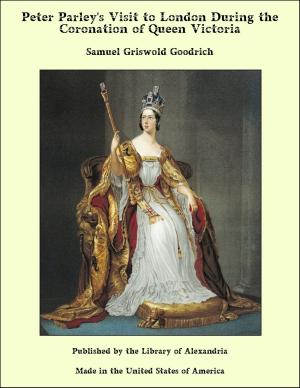The Campaign of Königgrätz: A Study of the Austro-Prussian Conflict in the Light of the American Civil War
Nonfiction, Religion & Spirituality, New Age, History, Fiction & Literature| Author: | Arthur Lockwood Wagner | ISBN: | 9781465513663 |
| Publisher: | Library of Alexandria | Publication: | March 8, 2015 |
| Imprint: | Language: | English |
| Author: | Arthur Lockwood Wagner |
| ISBN: | 9781465513663 |
| Publisher: | Library of Alexandria |
| Publication: | March 8, 2015 |
| Imprint: | |
| Language: | English |
The German war of 1866, generally known as “the Seven Weeks’ War,” presents many features of interest to the student, the statesman and the soldier. It closed a strife of centuries between opposing nations and antagonistic political ideas. It resulted in the formation of the North German Confederation, and thus planted the seeds of a nation, which germinated four years later, during the bloody war with France. It banished Austria from all participation in the affairs of Germany, expelled her from Italy, and deflected her policy thenceforth towards the east and south. It demonstrated that preparation for war is a more potent factor than mere numbers in computing the strength of a nation; and it gave an illustration on a grand scale of the new conditions of war resulting from the use of the telegraph, the railroad and breech-loading firearms. It is not the intention here to consider any but the military features of the great Germanic contest. Beginning the subject at the period when the quarrel between Austria and Prussia over the provinces that they had wrested from Denmark, passed from the tortuous paths of diplomacy to the direct road of war, we will consider the relative strength of the combatant nations. As the advocate of the admission of Schleswig-Holstein as a sovereign state in the Germanic Confederation, Austria gained first the sympathy, and then the active alliance, of Bavaria, Hanover, Saxony, Hesse-Cassel, Würtemberg, Baden, Hesse-Darmstadt and Nassau. Prussia aimed at the incorporation of the duchies within her own territory; and, though loudly championing the cause of German unity, her course was so manifestly inspired by designs for her own aggrandizement, that she could count on the support of only a few petty duchies, whose aggregate military strength did not exceed 28,000 men. As an offset to Austria’s formidable German allies, Prussia had concluded an offensive and defensive alliance with Italy, whose army, though new and inferior in organization, armament and equipment, to that of her antagonist, might be relied upon to “contain” at least three Austrian army corps in Venetia. The main struggle was certain to be between the two great Germanic nations.
The German war of 1866, generally known as “the Seven Weeks’ War,” presents many features of interest to the student, the statesman and the soldier. It closed a strife of centuries between opposing nations and antagonistic political ideas. It resulted in the formation of the North German Confederation, and thus planted the seeds of a nation, which germinated four years later, during the bloody war with France. It banished Austria from all participation in the affairs of Germany, expelled her from Italy, and deflected her policy thenceforth towards the east and south. It demonstrated that preparation for war is a more potent factor than mere numbers in computing the strength of a nation; and it gave an illustration on a grand scale of the new conditions of war resulting from the use of the telegraph, the railroad and breech-loading firearms. It is not the intention here to consider any but the military features of the great Germanic contest. Beginning the subject at the period when the quarrel between Austria and Prussia over the provinces that they had wrested from Denmark, passed from the tortuous paths of diplomacy to the direct road of war, we will consider the relative strength of the combatant nations. As the advocate of the admission of Schleswig-Holstein as a sovereign state in the Germanic Confederation, Austria gained first the sympathy, and then the active alliance, of Bavaria, Hanover, Saxony, Hesse-Cassel, Würtemberg, Baden, Hesse-Darmstadt and Nassau. Prussia aimed at the incorporation of the duchies within her own territory; and, though loudly championing the cause of German unity, her course was so manifestly inspired by designs for her own aggrandizement, that she could count on the support of only a few petty duchies, whose aggregate military strength did not exceed 28,000 men. As an offset to Austria’s formidable German allies, Prussia had concluded an offensive and defensive alliance with Italy, whose army, though new and inferior in organization, armament and equipment, to that of her antagonist, might be relied upon to “contain” at least three Austrian army corps in Venetia. The main struggle was certain to be between the two great Germanic nations.















